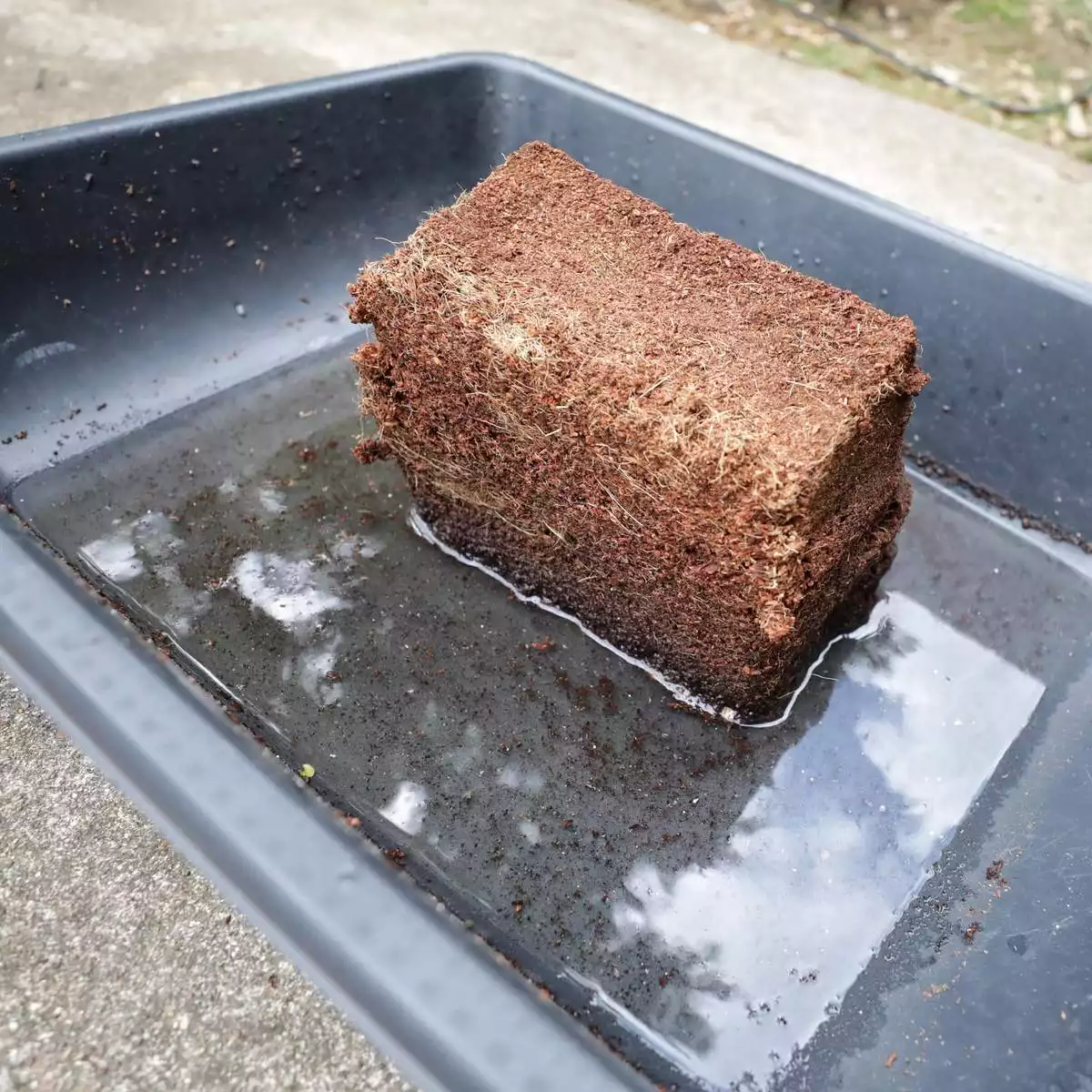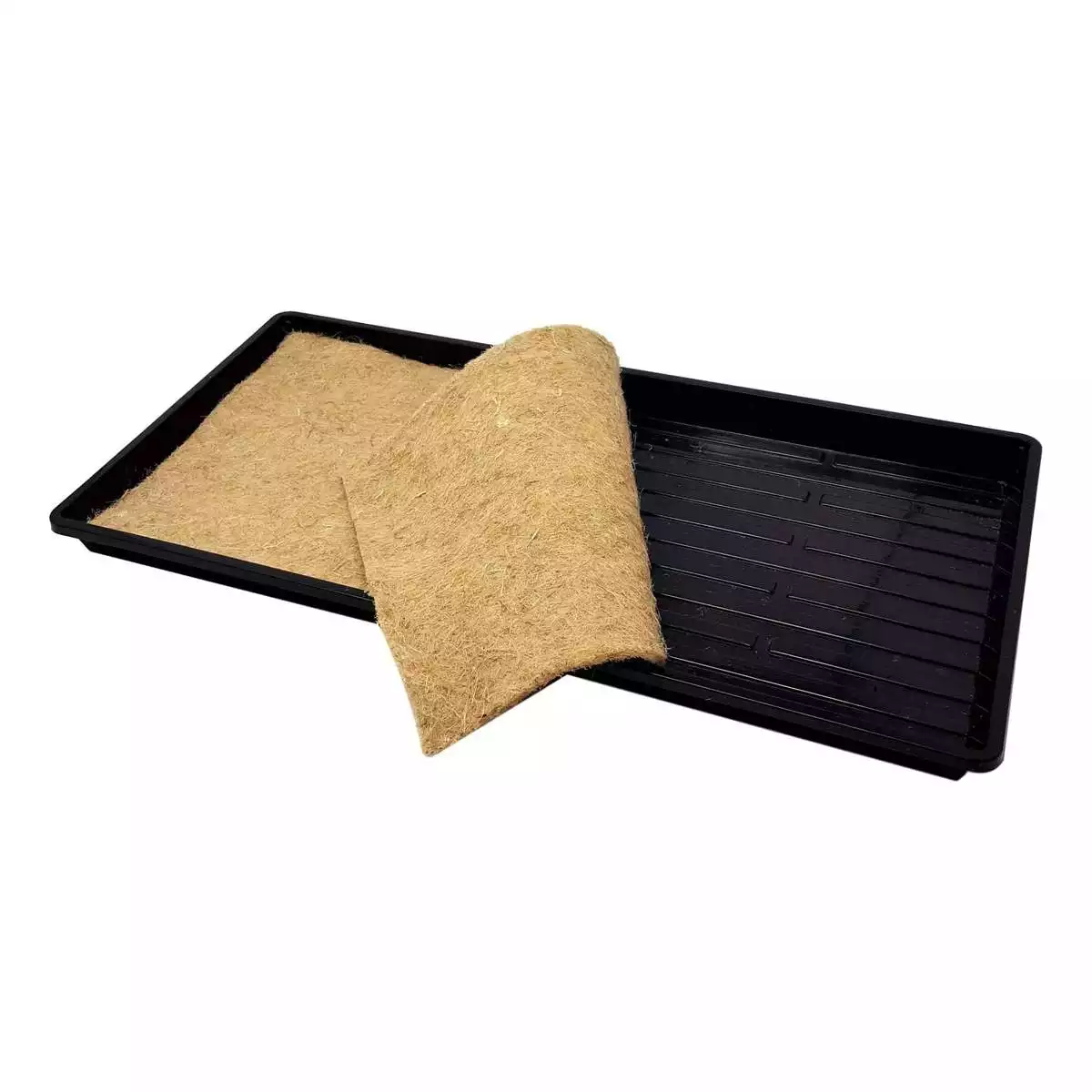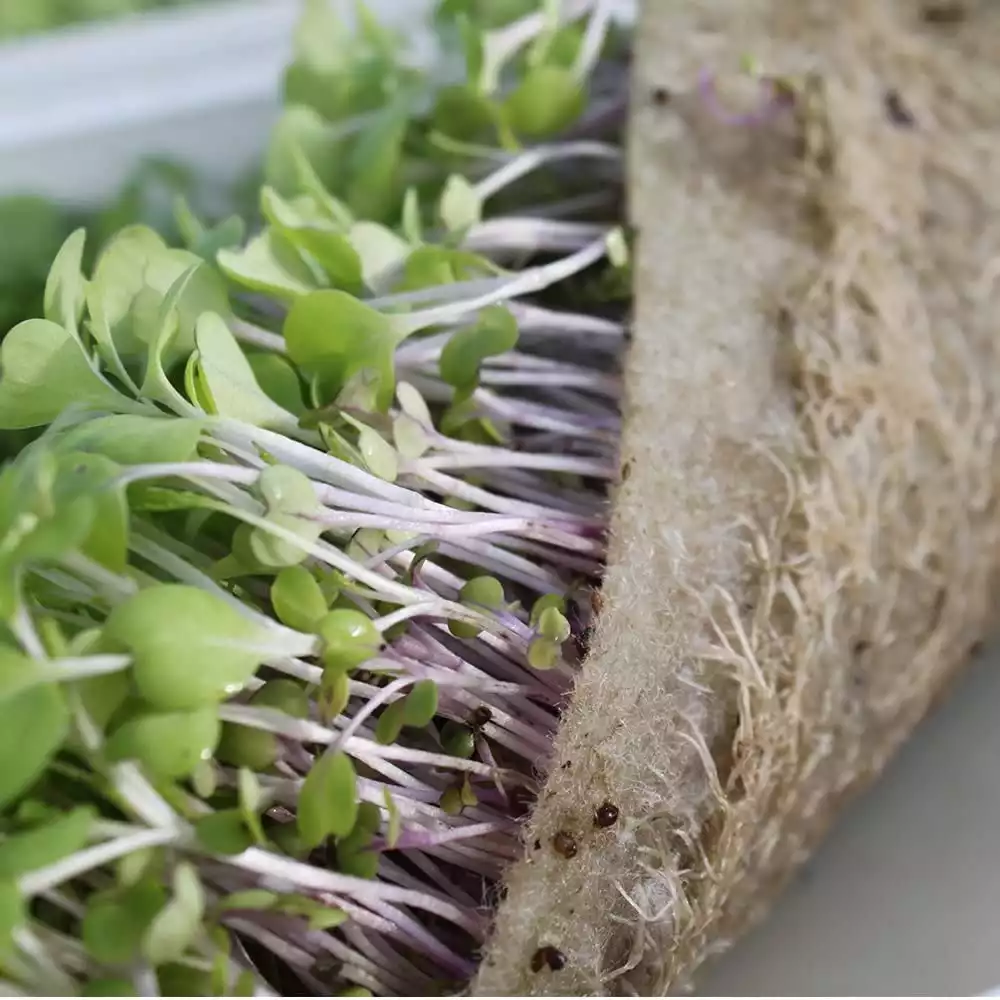A growing medium serves a few purposes: to supply the roots water, air, and nutrients, and support the plant. I’ll walk you through this process and discuss some of the more common questions people are asking about the development of microgreens.
You can use a ton of different mediums to grow microgreens, but having a lot of options can cause some confusion. So let’s walk through some of the more popular mediums and see how effective they are, what they cost, and which is best for your grow room.
When growing microgreens indoors, there are a lot of things to consider.
TL;DR
- Cheapest: Best Soil Mix
- Reliable and Cheap: Coconut Coir Fiber
- Compostable, Great Water Retention: Hemp Mats
- Reusable, but Advanced: Burlap Fiber
Potting Soil
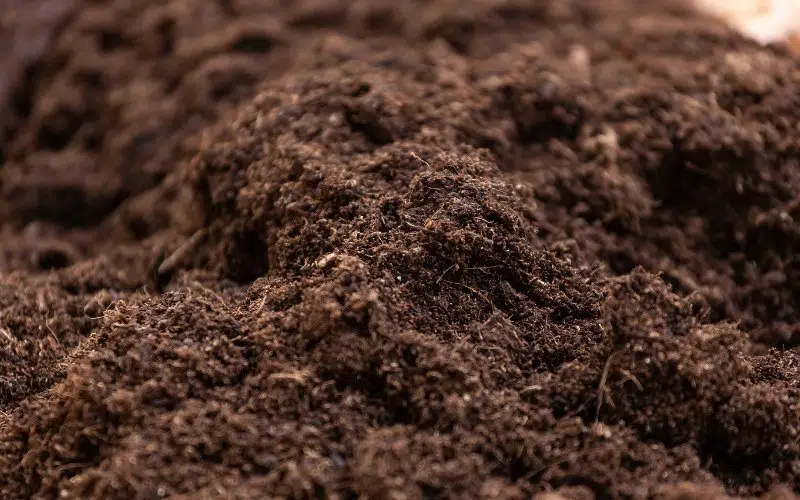
- Reusable: Not for more microgreens, but can be a great addition to compost
- Sterile: No
- Effectiveness Score: 9
- Water Retention: 6
- Needs Added Nutrients: No
- Cost: $$
- Downsides:
One great option is good old potting soil. While many people will tell you it’s not the best choice, I love using this stuff. It’s great for people who aren’t selling microgreens, and just growing their own at home.
This is because you have to surpass certain quality standards to be able to sell to chefs and grocery stores. Soil complicates things because they don’t want actual soil in their kitchens. While potting soil doesn’t last forever, it still lasts longer than some of the other options.
If you’re selling microgreens to restaurants and stores, it’s a little messier and might not be the best choice. It’s also not sterile so you have the chance of having to worry about mold or other organisms. If you want to use sterile soil mixes, you’ll want to check the bag and do some research before purchasing.
Organic potting soil is cheap, effective, and helps foster root growth as it’s light and fluffy. Its light and fluffy texture means that microgreens grow well in it.
This is my favorite potting soil and there’s been little competition as it can be used for starting microgreen seeds indoors, as well as starting “regular” seeds.
Soilless Mix / Sterilized Soil
- Reusable: Yes
- Sterile: Yes – most are, check the labels to make sure
- Effectiveness Score: 8
- Water Retention: 6
- Needs Added Nutrients: Yes
- Cost: $$
A soilless mix doesn’t have the nutrients that potting soil does, but they have many of the same benefits as “regular soil” but they are sterile so you won’t have to worry about harmful organisms.
It’s also fairly light, which makes it easy for the plant to break through. Because of this, you get faster germination times as well as stronger and bigger roots.
This is a common option for people selling microgreens as they can guarantee their customers that there are no harmful organisms in the potting mix.
I’ve used this soil with good results, but I prefer to use organic potting soil because it’s easier for the plant to get nutrients from. There is one downside though, and that’s the cost. It can be expensive and you need to make sure it is checked for harmful organisms before using it.
Coconut Coir Mats & Fiber
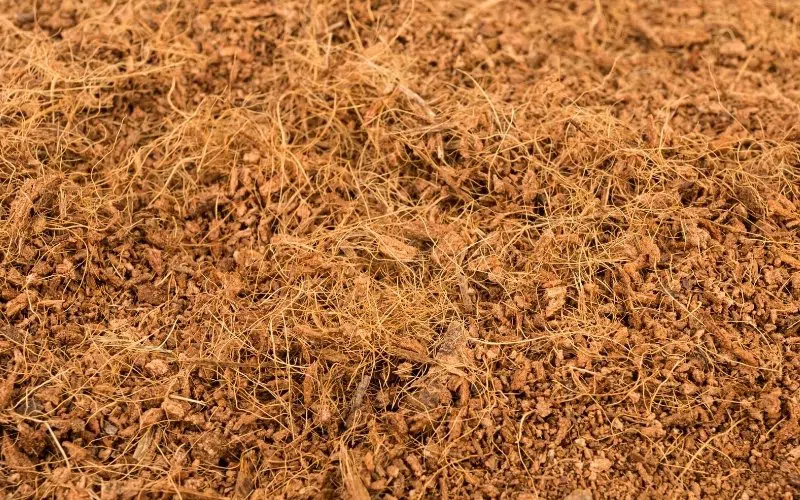
- Reusable: Yes
- Sterile: Yes
- Effectiveness Score: 10
- Water Retention: 8
- Needs Added Nutrients: Yes
- Cost: $
Coconut coir is a great alternative to peat moss if you are looking for an environmentally friendly option.
Coconut coir is my favorite all-around medium for growing microgreens. I love it because it’s really good at retaining water, but not too good if you know what I mean. It’s also more sustainable than
- A more sustainable option than peat moss
- Can be reused multiple times
- Light and fluffy which promotes healthy root growth
- More expensive than soil
Coconut coir fiber is similar to the coconut coir mats but is just broken down fibers.
It is a great alternative to coco coir if you are looking for something cheaper.
For the most part, the two are interchangeable as far as effectiveness, but I’ve found it takes more of the fiber to get things going when you’re first starting out.
Burlap
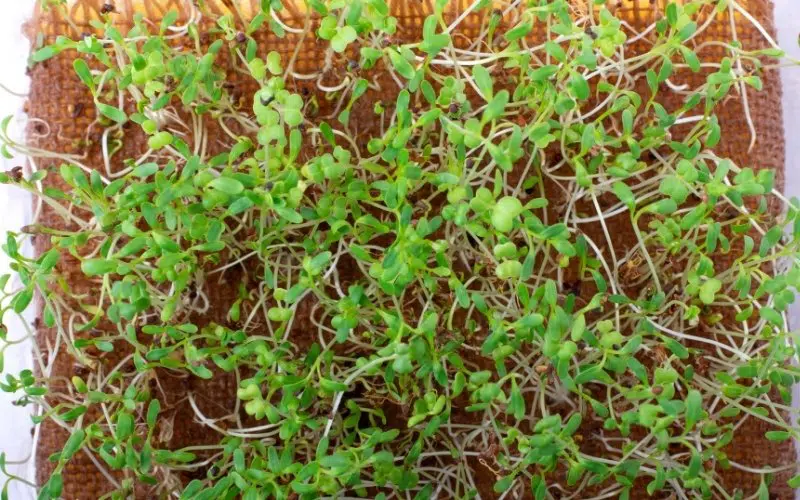
- Reusable: Yes
- Sterile: Yes
- Effectiveness Score: 10 (if conditions are literally perfect)
- Water Retention: 7
- Needs Added Nutrients: Yes
- Cost: $
Burlap is a great choice for a professional microgreens grower. It’s quite difficult to get the hang of using it because the growing conditions need to be perfect in terms of humidity, temperature, fertilizer, and watering.
Which makes it a great choice for the more professional grower, but not so much for people who are just getting started.
Burlap fiber looks like old burlap sacks. It doesn’t hold water very well in my experience, but it does make germination easy if you have the right growing conditions.
Jute Pads
- Reusable: Yes
- Sterile: Yes
- Effectiveness Score: 8
- Water Retention: 3
- Needs Added Nutrients: Yes
- Cost: $$
Jute is a great alternative if you don’t have the space or money to buy a kit. It’s not technically reusable, but it is easy to clean and can be used over and over again until there are holes in them that make them unusable.
- Cheap
- Very Effective
- Fit Trays Perfectly
- Not-Reusable
Jute pads are made from jute fiber, which comes from the jute plant and is a popular twine product used in gardening.
These are great for evenly dispersing water throughout the growing trays and can be used over and over again.
Peat Moss
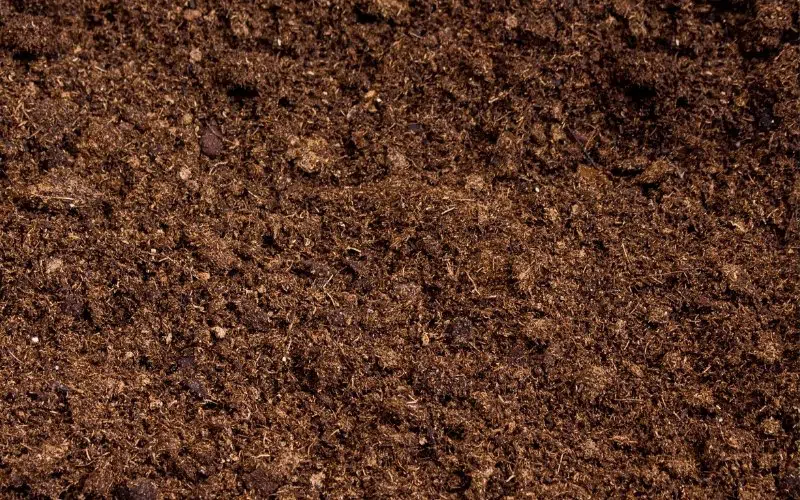
- Reusable: Yes
- Sterile: Depends on the brand
- Effectiveness Score: 10
- Water Retention: 8
- Needs Added Nutrients: Yes
- Cost: $$ to $$$$ depending on where you buy it from.
Peat moss is a great option for you to grow microgreens in, but it is not the most environmentally friendly option. The way it’s harvested is not exactly sustainable, which has led to a decent-sized debate among the gardening community about whether or not to use it.
But it does work! The good news is, it has a lot of room for plant growth which will keep plant roots healthy.
Make sure your source for peat moss comes from sustainable sources and not peat bogs at your own discretion.
Hemp Mats
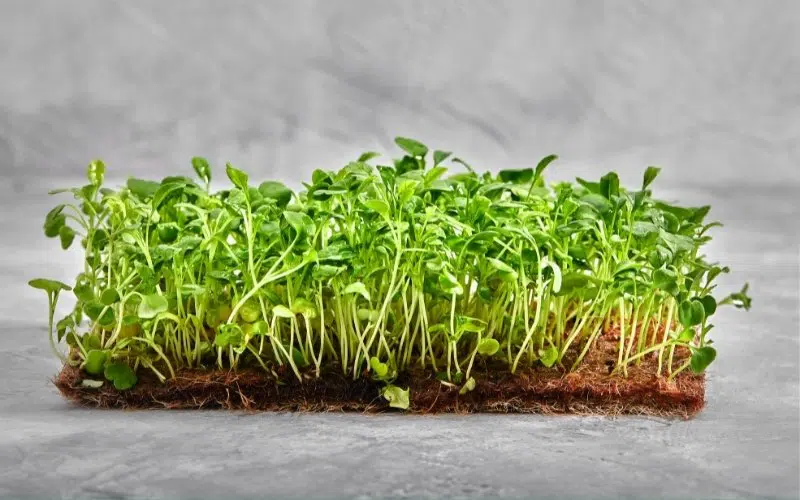
- Reusable: Yes, but they’re difficult to clean
- Sterile: Yes
- Effectiveness Score: 9
- Water Retention: 8
- Needs Added Nutrients: No
- Cost: $$
Hemp grow mats are made from chopped hemp stems and woven hemp fiber.
- Compostable
- Effective
- Great water retention
- Cheap
- Can be hard to reuse
They’re very similar to jute pads in terms of effectiveness, and are great for growing wheatgrass and sprouts, along with microgreens. I like these growing mats because you can buy them in rolls and just cut them to fit whatever trays you’re using as you need them.
Hemp mats are made from woven hemp fibers that allow for very good drainage and distribute water evenly throughout the growing containers. They hold water so well that you can use less of it when compared to coco coir mats. Hemp can also be composted, so it’s environmentally friendly!
Biostrate
- Reusable: Yes, but cleaning can be a tedious process
- Sterile: Yes
- Effectiveness Score: 9
- Water Retention: 8
- Needs Added Nutrients: Yes
- Cost: $ – can get 72 pack for $80 on Trueleaf Market
Biostrate is “a biobased non-woven felt made from a biopolymer and natural fiber blend.”
Whatever that means, it was specifically designed to be used in hydroponic microgreens, but can be used regularly as well.
It’s perfect for microgreens, wheatgrass, and growing salad greens.
a great option for a professional grower. It’s kind of expensive, but it lasts forever and is reusable. Biostrate is made from recycled construction materials and contains no harmful chemicals for plants to be grown in. It’s also compostable and biodegradable but holds its shape and effectiveness throughout the life cycle of the plant.
- Reusable
- Compostable
- Cost-Effective
- Great for professional growers
- Can be difficult to get the hang of
Micro Mats
AKA Confetti mats or cellulose mats
- Reusable: No
- Sterile: Yes
- Effectiveness Score: 6
- Water Retention: 9
- Needs Added Nutrients: Yes
- Cost: $$
- Downsides: Fragile when wet
Some people love them, some people hate them. These mats become really fragile when wet, and are easy to rip if you need to move them. Some people noted really slow germination times.
Perlite
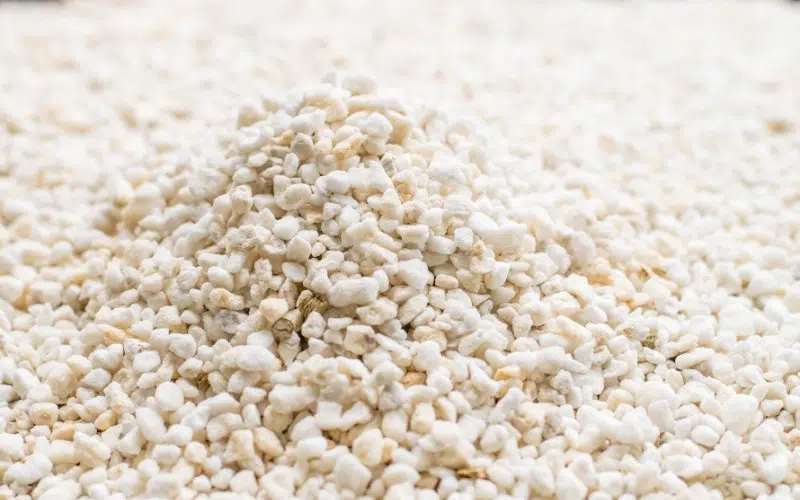
- Reusable: Yes
- Sterile: Yes
- Effectiveness Score: 6
- Water Retention: 3
- Needs Added Nutrients: Yes
- Cost: $
Perlite is a natural material that comes from volcanic glass. It aids in transplanting and can help your plants get the air they need to germinate even in a more humid environment (like inside your home).
It’s great for starting seeds indoors, but not so much for growing microgreens because it won’t work as well with water and nutrients.
Vermiculite
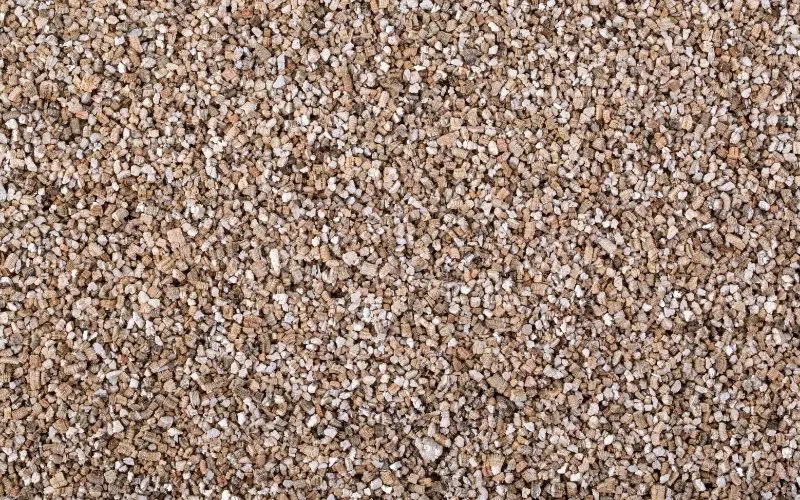
- Reusable: Yes
- Sterile: Yes
- Effectiveness Score: 6
- Water Retention: 4-5 (more water retention than perlite, and less than coco coir)
- Needs Added Nutrients: Yes
- Cost: $
Vermiculite is a naturally occurring mineral that can hold up to five times it’s weight in water!
Vermiculite is similar to perlite, but it’s more powdery and has a cloudy appearance.
It’s great for slowing down the watering process when you’re using water from under your soil or growing medium so that your plants don’t get overwatered and drown.
Vermiculite is excellent for germinating seeds because of its ability to hold onto water.
It’s somewhat effective for microgreens and similar plantings, but you would need to provide some additional nutrients in order for your plants to thrive.
- Reusable
- Light and fluffy
- Cheap
- Needs added nutrients
- Doesn't retain as much water
Rockwool
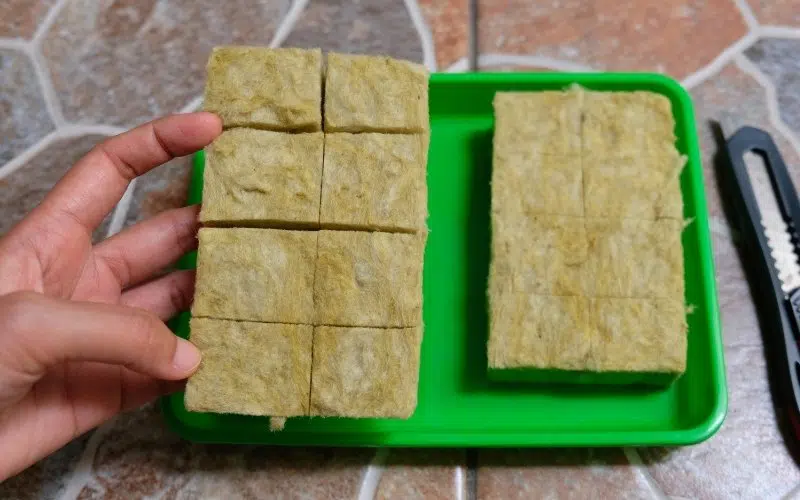
- Reusable: Yes
- Sterile: Yes
- Effectiveness Score: 6
- Water Retention: 2-3
- Needs Added Nutrients: Yes
- Cost: $$
Rockwool is made from molten rock and a fabric or cellulose scrim. Sounds crazy, but it’s pretty cool. While it’s mostly used for hydroponic growing, rockwool can be a great choice for growing plants as well.
It’s perfect for starting seeds and cuttings because of its porous nature, but not so much for growing microgreens because it comes in blocks that only grow one seed at a time. Rockwool doesn’t hold onto water very well at all, so you will need to add nutrients for your plants (unless you are just using rockwool as a seed starter).
My Recommendation
My favorite of these microgreens growing mediums is coconut coir. It’s pretty inexpensive and is widely available. It helps keep seeds moist but also drains pretty well.
If I don’t have coconut coir available, I like to use a soil mix as my growing medium because it’s light, fluffy, drains well, and doesn’t cause many problems with mold like some of the other options do. Moisture retention is great, but too much of it can lead to mold growth and then you have to start your trays over again.
- A more sustainable option than peat moss
- Can be reused multiple times
- Light and fluffy which promotes healthy root growth
- More expensive than soil



